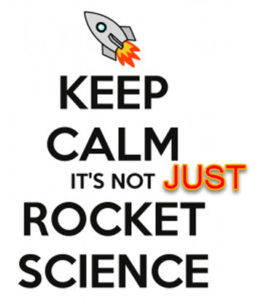 A colleague recently shared that his aerospace engineering and manufacturing facility had just announced a major layoff at. We had worked there together in the past, so I was familiar with the facility and organizational ecosystems.
A colleague recently shared that his aerospace engineering and manufacturing facility had just announced a major layoff at. We had worked there together in the past, so I was familiar with the facility and organizational ecosystems.
After the initial shock and disappointment (former colleagues had suffered major disruptions to their livelihoods) wore off, I realized I was not at all surprised. The seeds for this disruption were sown in the decades that preceded it.
Do any of these indicators resonate for you?
- Senior “good old boy” leadership team that had remained largely intact for years
- Business benefiting from significant barriers to entry for new competitors
- “Cost plus” pricing model where process inefficiencies can actually be profitable
- More profitable than other divisions in the corporation, so more likely to be left alone while corporate leadership dealt with more urgent business needs
- Lots of talk about the need for continuous improvement but little real commitment by the leadership to implement it
In the Complexity Space™ Framework, we introduce the concept of “Ecosystem Dimensions.” Dimensions are enduring, system-wide patterns of thought and behavior. I applied the four categories of Dimensions to my colleague’s organization:
History: The company has been in business for a long time, helping to pioneer major advances in the aerospace field. “This must be the right way to do it – after all, we invented it!”
Context: The business exists in the context of being a prime contractor to the defense industry. Highly regulated. Slow to change. Few competitors with significant barriers to entry. “Cost-plus” pricing.
Culture: The organization is comprised of rocket scientists (really!), engineers, and high-tech manufacturing personnel. “The smartest one, with the best pedigree wins” – whether or not their idea is actually the best solution for the problem at hand.
At the leadership team level, an additional dynamic is at play. Since the universe of organizations in this market niche is small, everyone knows everyone else, with many having worked with one another before. There is a strong network that results in a “one of us/not one of us” mindset if someone new is introduced to the leadership team.
Motivation: Many employees believe that, “We’re an essential part of keeping the USA and its allies safe and will always be needed.” Because of the barriers to entry, “We’re too big (important) to fail.” And for the highly tenured leaders, “Don’t rock the boat – let’s ride the status quo into (a very nice) retirement.”
Notice each of these makes perfect sense from the perspective of those in the organization. However, those same perspectives made it more difficult to see and deal with:
- Cost-plus pricing being replaced by fixed cost pricing
- An increasing intolerance for chronic quality problems by the customer
- The emergence of competitors with the resources to fight through the barriers to entry
- Increasing amounts of “group think” and intolerance for new thinking
- Mergers and acquisitions shifting the balance of power at the corporate level
Using the “lens” of Ecosystem Dimensions, it is (unfortunately) easy to see how plummeting business results could result in major reductions in force. And to make it even worse – Larry saw the same set of organizational dynamics result in the closing of another aerospace facility he worked at 15 years ago!
We invite you to “step back” and view your own organization through the lens of these four Dimensions. Learn more about them by visiting our website at http://complexityspace.com or by purchasing our book, Complexity Works! Influencing Patterns of Change in Teams and Organizations at http://tinyurl.com/Complexity-Works.
